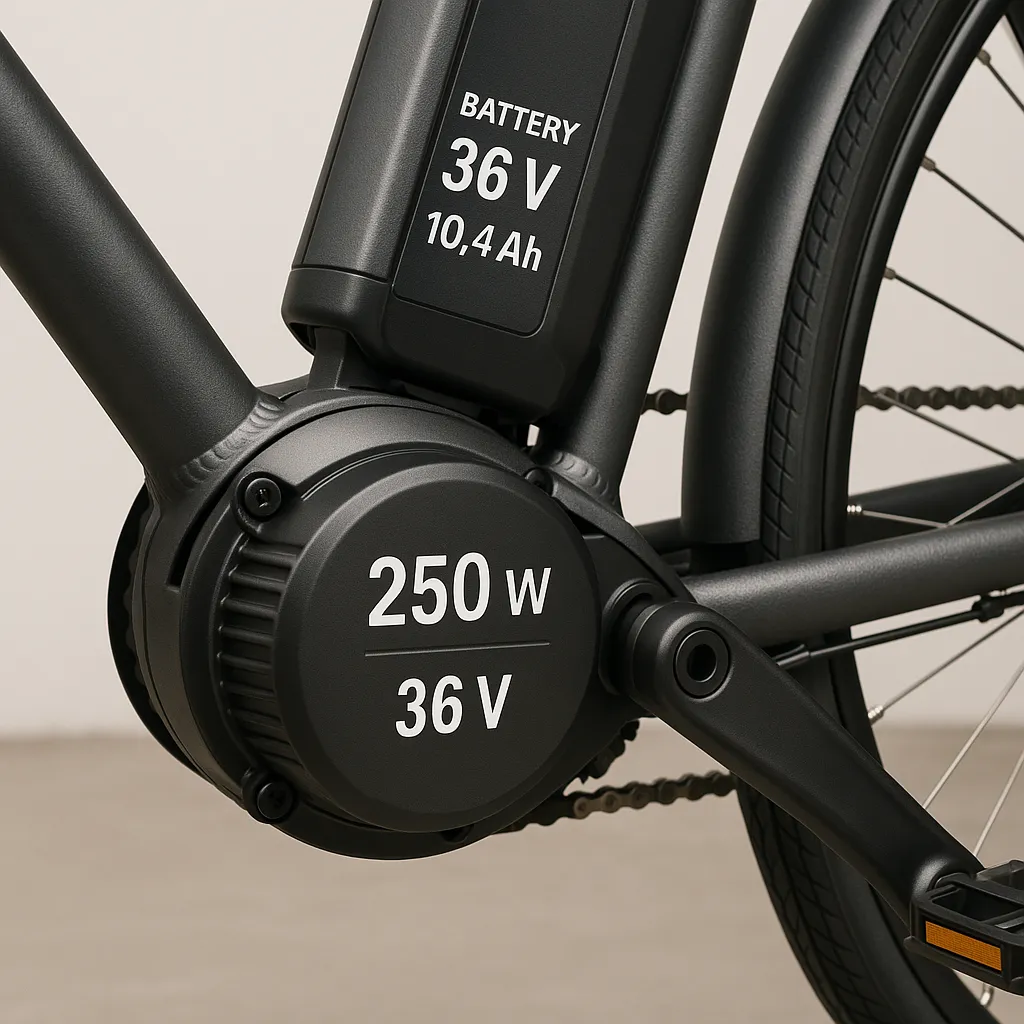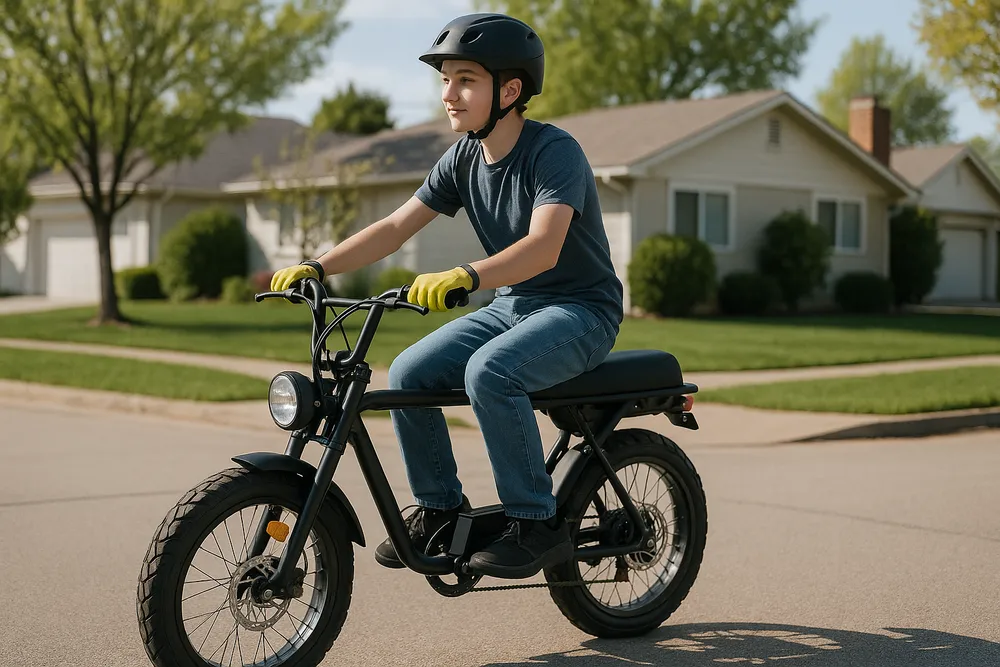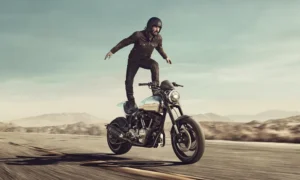The electric bike revolution is in full swing. From bustling city streets to quiet suburban paths, e-bikes have become a common sight, offering a convenient and eco-friendly way to get around. But as these two-wheeled vehicles grow in power and popularity, a new and complex legal landscape is emerging. States are beginning to reclassify high-powered e-bikes as motor-driven cycles or even full-fledged motorcycles, a shift that has significant implications for riders. If you own an e-bike or are considering buying one, it’s crucial to understand these changing laws to ensure you’re riding legally and safely.
The E-Bike Boom and the Rise of a Legal Gray Area
Just a few years ago, e-bikes were a niche product. Today, they are one of the fastest-growing segments of the transportation market. In 2022 alone, Americans purchased over 1.1 million e-bikes, a fourfold increase from 2019 [1]. This surge in popularity is easy to understand. E-bikes offer the benefits of a traditional bicycle—exercise, fresh air, and avoiding traffic—with the added boost of an electric motor. They make cycling accessible to a wider range of people and offer a practical alternative to cars for short commutes.
However, the technology has evolved rapidly. Early e-bike models offered modest assistance, but today’s market is flooded with high-powered machines that can reach speeds of 60 mph or more, often with simple modifications. This has created a significant legal gray area. Most states have outdated laws that don’t adequately address the capabilities of modern e-bikes, leaving riders and law enforcement in a state of confusion. Are they bicycles, mopeds, or motorcycles? The answer is increasingly complex and varies from state to state.
Connecticut’s New Law: A Sign of Things to Come
A clear example of this regulatory shift is a new law in Connecticut that takes effect on October 1, 2025. This legislation is one of the first in the nation to create a tiered system for e-bikes based on their power output [2]. Here’s how it breaks down:
E-bike Classification Table:
| Power Range | Classification | Requirements |
|---|---|---|
| Under 750W | Traditional E-bike | Standard bicycle rules apply |
| 750W – 3,500W | Motor-driven cycle | Valid driver’s license required |
| Over 3,500W | Motorcycle | Motorcycle license, registration, and insurance required |

This new law was prompted by a growing number of accidents involving high-speed e-bikes, particularly among young riders. Law enforcement officials reported that teenagers were modifying their e-bikes to disable speed limiters, turning them into vehicles capable of highway speeds. The tragic death of a 15-year-old who was struck by a car while riding an e-bike highlighted the urgent need for clearer regulations.
Why This Matters for Every Rider
The changes in Connecticut are not an isolated event. Several other states, including Montana and New York, are also grappling with how to regulate the growing e-bike market. For riders, this means that the e-bike you bought last year, which was legally considered a bicycle, might be classified as a motorcycle next year. This has several important implications:
Licensing and Registration: You may need to obtain a motorcycle license and register your e-bike with the DMV. This involves passing a written and practical exam, as well as paying registration fees.
Insurance: If your e-bike is classified as a motorcycle, you will be required to carry liability insurance. This is an added cost that many e-bike owners may not have anticipated.
Helmet Laws: Motorcycle helmet laws will apply to you. While you should always wear a helmet for safety, a legal requirement means you could be fined for not doing so. You can learn more about the specific helmet laws in your state by checking our State-by-State Motorcycle Law Breakdown.
Rules of the Road: You will be subject to all the same traffic laws as motorcycle riders. This includes rules about lane positioning, signaling, and where you are allowed to ride.

What to Do Now
Given this evolving legal landscape, it’s more important than ever for e-bike riders to stay informed. Here are a few steps you can take:
1. Know Your Bike’s Specs: Check the wattage of your e-bike’s motor. This information is usually found in the owner’s manual or on the manufacturer’s website. This will be the key factor in determining how your bike is classified.
2. Check Your State’s Laws: Visit your state’s DMV website or consult a local motorcycle rights organization to get the most up-to-date information on e-bike regulations. Don’t assume that the laws haven’t changed since you bought your bike.
3. Get the Right Gear: Regardless of the law, always wear a helmet. If your e-bike is on the higher end of the power spectrum, consider investing in other protective gear, such as a riding jacket and gloves. Learn more about essential safety equipment in our Motorcycle Safety section.
4. Ride Responsibly: The future of e-bike regulation will be shaped by how riders behave. Obey traffic laws, be courteous to other road users, and never modify your e-bike to disable safety features.
The Broader Impact on Transportation
This shift in e-bike classification reflects broader changes in how we think about personal transportation. As electric vehicles become more powerful and prevalent, traditional categories of bicycles, motorcycles, and cars are becoming less distinct. This regulatory evolution is likely to continue as technology advances and more states grapple with how to safely integrate these new forms of transportation into existing traffic systems.
For riders who value the freedom and flexibility that e-bikes provide, staying informed about these changes is essential. Understanding your local laws and riding responsibly will help ensure that e-bikes remain a viable and legal transportation option for years to come.
The lines between e-bikes and motorcycles are blurring, and the laws are struggling to keep up. By staying informed and riding responsibly, you can ensure that you are enjoying your e-bike safely and legally for years to come.





